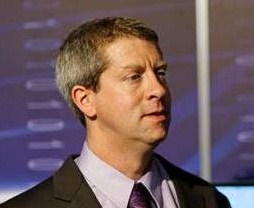Joshua Reiss, Queen Mary University of London – Origins of Auto-Tune
 Auto-Tune rules today’s Top 40 airwaves.
Auto-Tune rules today’s Top 40 airwaves.
Joshua Reiss, reader in the school of electronic engineering and computer science at Queen Mary University of London, says the origin of this technique came from an unlikely place.
Dr. Joshua D. Reiss (member IEEE, AES) was born in 1971, and is a Senior Lecturer with the Centre for Digital Music in the School of Electronic Engineering and Computer Science at Queen Mary University of London . He has bachelor’s degrees in both Physics and Mathematics, and received his PhD in physics from the Georgia Institute of Technology, specializing in the analysis of chaotic time series. In June of 2000, he accepted a research position in the Audio Signal Processing research lab at King’s College, London, and moved to Queen Mary in 2001. He made the transition from chaos theory to audio and musical signal processing through his work on sigma delta modulators, which has lead to a nomination for a best paper award from the IEEE, as well as a UK patent. He has investigated music retrieval systems, time scaling and pitch shifting techniques, polyphonic music transcription, loudspeaker design, automatic mixing for live sound and digital audio effects. His primary focus of research, which ties together many of the above topics, is on the use of state-of-the-art signal processing techniques for professional sound engineering.
Dr. Reiss has published over 100 scientific papers and serves on several steering and technical committees. As coordinator of the EASAIER project, he led an international consortium of seven partners working to improve access to sound archives in museums, libraries and cultural heritage institutions. He was on the Organising Committee of the Digital Audio Effects (DAFx) conference in 2003, the Steering Committee of Galileo Advanced Concepts (2005-7), and the Organising Committee of the 1st Annual Music Information Retrieval Evaluation eXchange (MIREX2005). Also in 2005, He was Programme Chair of the 6th International Conference on Music Information Retrieval (ISMIR), hosted by the Centre for Digital Music.
Dr. Reiss is very active in the Audio Engineering Society (AES), including being a member of the Review Board for the Journal of the AES, a member of the Technical Council, and co-chair of the Technical Committee on High-resolution Audio. He was General Chair of the 2007 AES Conference on High Resolution Audio, the first international conference dedicated to that subject. In 2009 he was General Secretary of the 35th AES International Conference, Audio for Games. He was also Chair of the 128th and Papers Chair of the 130th AES Convention.
Origins of Auto-Tune
Anyone who listens to commercial radio nowadays has probably been hit with the impression that a lot of pop music sounds very similar. One particular technology has had an especially strong influence on the homogenization of music. Throughout the Eighties, Dr. Andy Hildebrand worked for the oil industry, interpreting seismic data. By sending sound waves into the ground, he could detect reflections and map potential drill sites. Hildebrand also studied music composition and used his data analysis knowledge to develop audio processing tools. At a dinner party, a guest challenged him to invent a tool that would help her sing in tune.
In 1996, Hildebrand’s Antares Audio Technologies released Auto-Tune, which was intended to correct off-key vocals. It moves the pitch of a note to the nearest true semitone (the nearest musical interval in traditional Western music). The original Auto-Tune had a speed parameter which determined how quickly the note moved to the target pitch. Engineers realised that by setting this ‘attack time’ very short, Auto-Tune could be used to make it sound as if the voice leaps from note to note. It gives vocals an artificial, synthesiser like sound that can be appealing or irritating depending on taste, as evidenced in Cher’s 1998 hit song, ‘Believe.’
Like many audio effects, engineers and performers found a creative use, quite different from the intended use. As Hildebrand said, “I never figured anyone in their right mind would want to do that.”
Yet Auto-Tune and competing pitch correction technologies are now widely applied in amateur and professional recordings, and across many genres. Both its subtle, corrective use and overt, creative use continue to grow. Some young listeners who have grown up listening to auto-tuned music think the singer lacks talent if they hear an unprocessed vocal track. You may love it, hate it or perhaps not even notice it, but Auto-tune has changed the music landscape.


